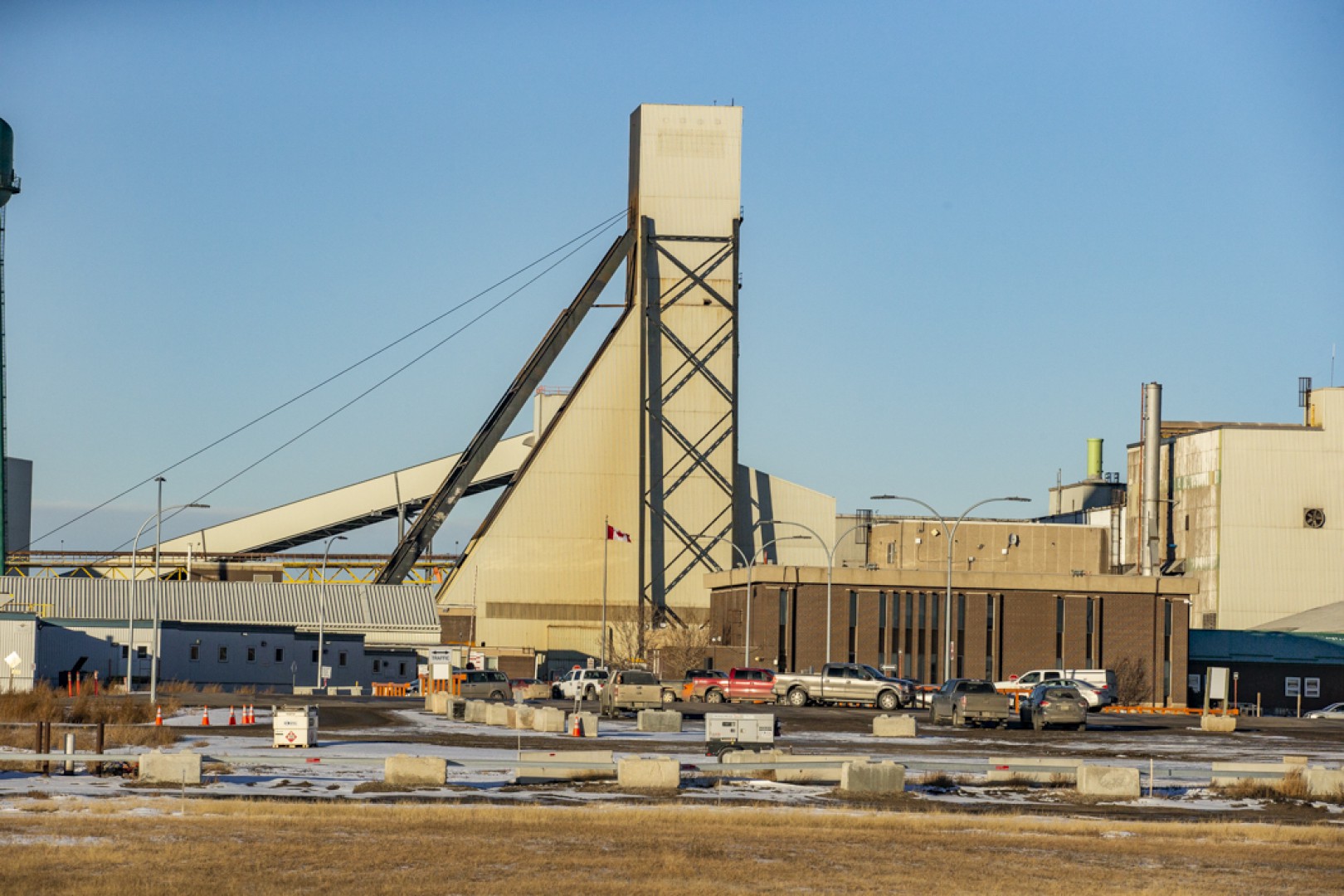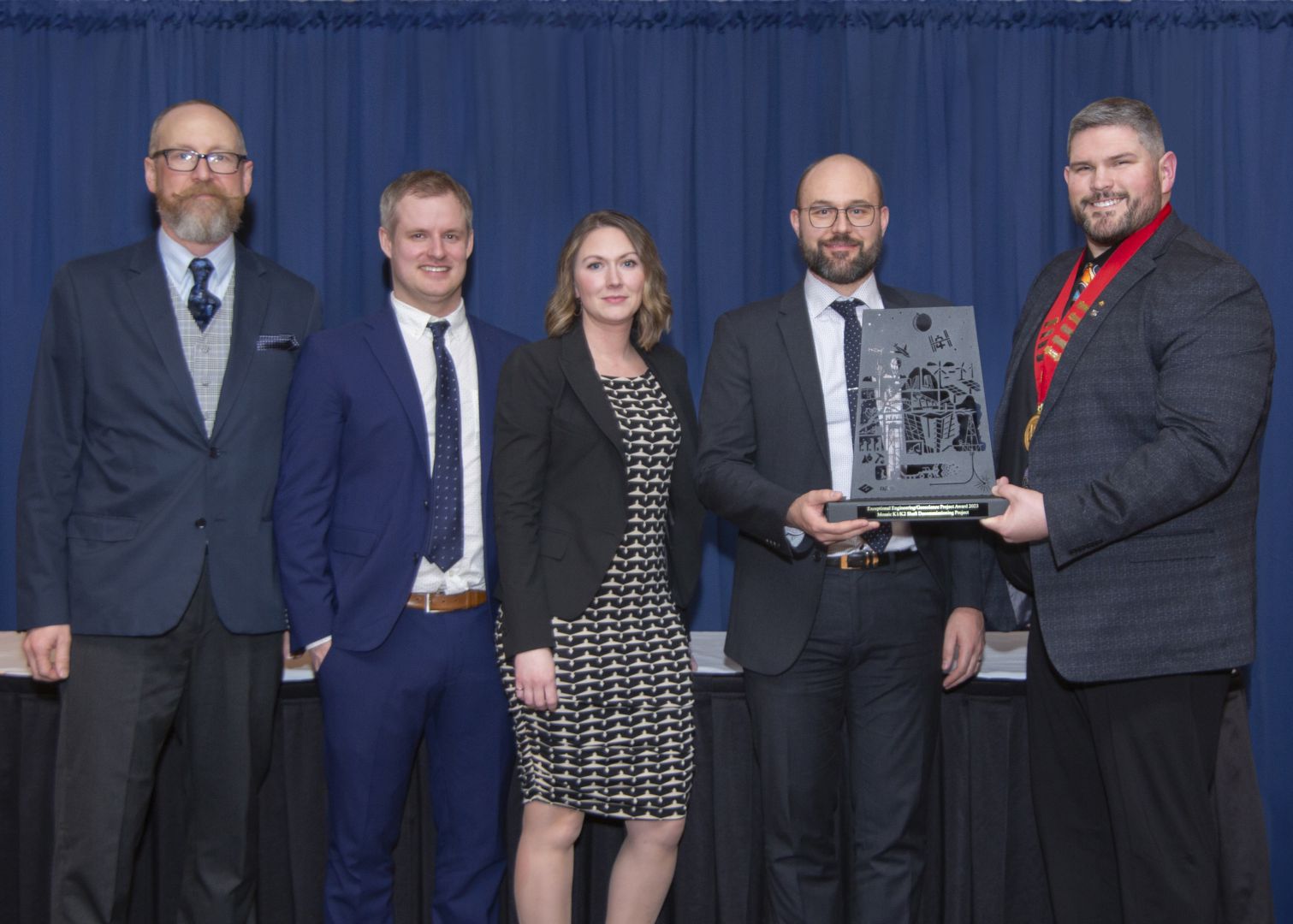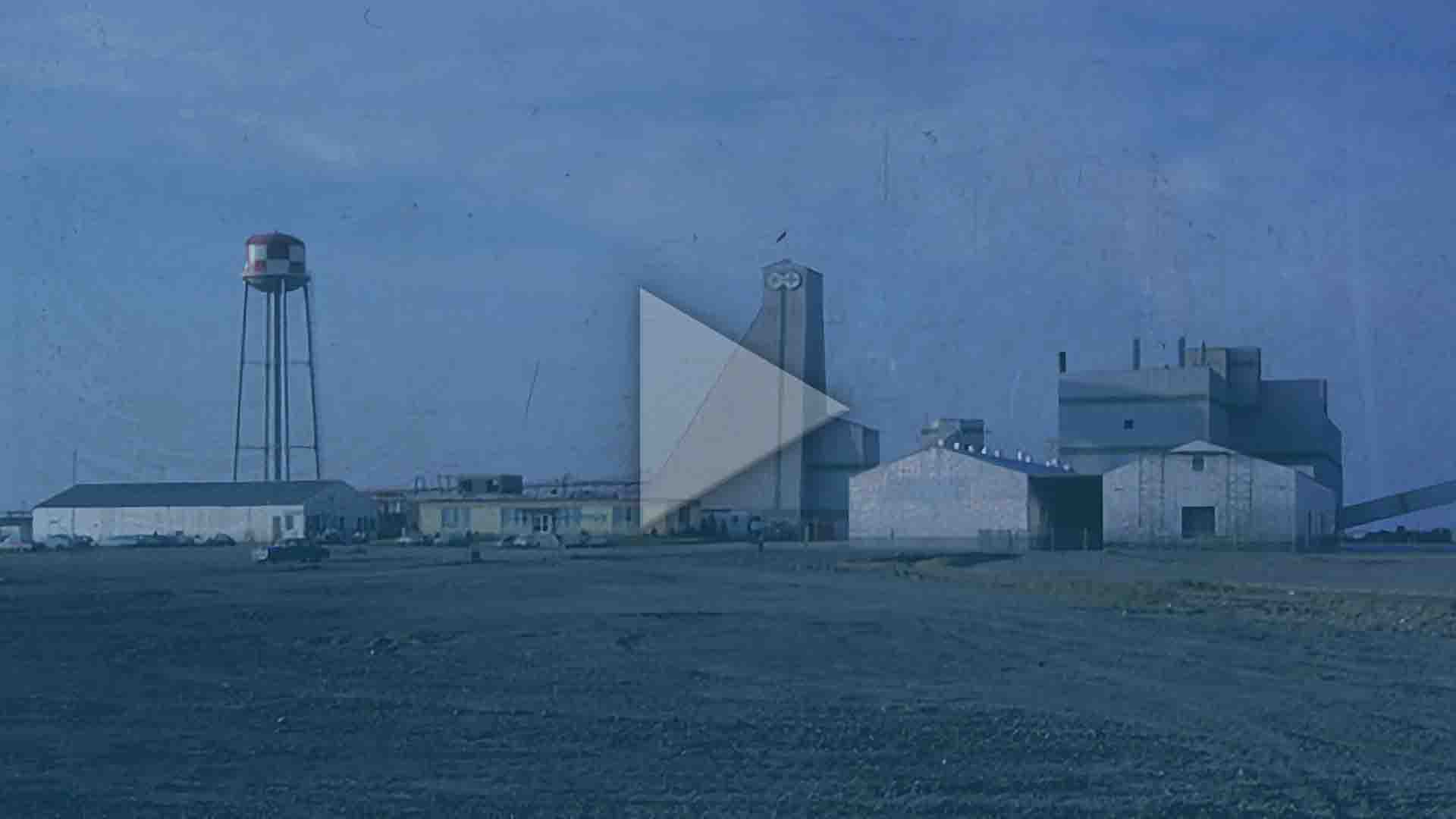
Mosaic K1/K2 Shaft Decommissioning Project Recognized with Exceptional Engineering/Geoscience Award
The Mosaic K1/K2 Shaft Decommissioning Project was the first fully engineered and designed decommissioning of a potash mine in the province of Saskatchewan.
On March 2, this innovative work was recognized by the Association of Professional Engineers and Geoscientists of Saskatchewan with an Exceptional Engineering/Geoscience Project Award.
“We are incredibly proud that we executed the project a year ahead of schedule and under budget,” said Shawn Haeusler, Engineer Lead - Strategic Capital Projects, who joined the project team in 2020. “But what we’re most proud of is that this work was done safely and responsibly – with our top priorities being to protect our people and the environment.”
|
Brian Mattie, Thyssen Mining Construction, Nathan Morgan, RESPEC, Brittany Chubey, Hatch and Shawn Haeusler, Mosaic, accepted the Exceptional Engineering/Geoscience Project Award from the President of the Association of Professional Engineers and Geoscientists of Saskatchewan – John Desjarlais on March 2. |
The project involved taking two mine shafts offline earlier than anticipated due to historic brine inflows, which Mosaic has managed since the late 1980s.
Mosaic began developing K3, the first of two new shafts in 2009, to transition ore supply and eliminate the substantial costs that came with sustaining the operation of the K1/K2 underground mines during inflow conditions.
Getting to work
In 2017, Mosaic started consultations with Thyssen Mining Construction, who helped design plans to install concrete “plugs” into the two mine shafts.
“The mine is approximately 3,200 feet below the surface,” said Shawn “The intent of the plugs was to mimic the geological strata at the minus 1,200-foot level and essentially try to put the shafts back to the original condition prior to us starting mining.”
The project contained many unique challenges, including retiring two mining shafts with different characteristics in each structure. The Mosaic team hired Hatch, an engineering firm, as a contractor for the project. “Hatch was involved from an engineering coordination standpoint,” said Shawn.
The Mosaic team also worked with RESPEC, which was relied on for its geotechnical engineering knowledge. “They worked with engineering experts that developed the specialty custom concrete and the grouting system that were required to properly seal up the shafts,” said Shawn. K1/K2 shafts were decommissioned and sealed in 2022.
The end of an era
The K1 mine shaft gets its name from the periodic table of elements. A combination of potassium (K) salts forms potash, with potassium chloride, and results in a highly desirable commodity.
K1 was Saskatchewan’s first successful potash mine to go into production in 1962. Five years later, the K2 mine shaft was sunk, and the two mine shafts combined would operate locally near Esterhazy for more than half a century, bringing millions of tonnes of potash ore to the earth’s surface.
In 2009, Mosaic started building K3, two new mine shafts, to replace K1/K2. Today, K3 is fully operational and has a total hoisting capacity of more than 72,500 tonnes per day, and in September 2022, set a new daily record of 63,180 tonnes.
|
Twister Pear Productions filmed a time-lapse video of dismantling the K1 shaft. |


